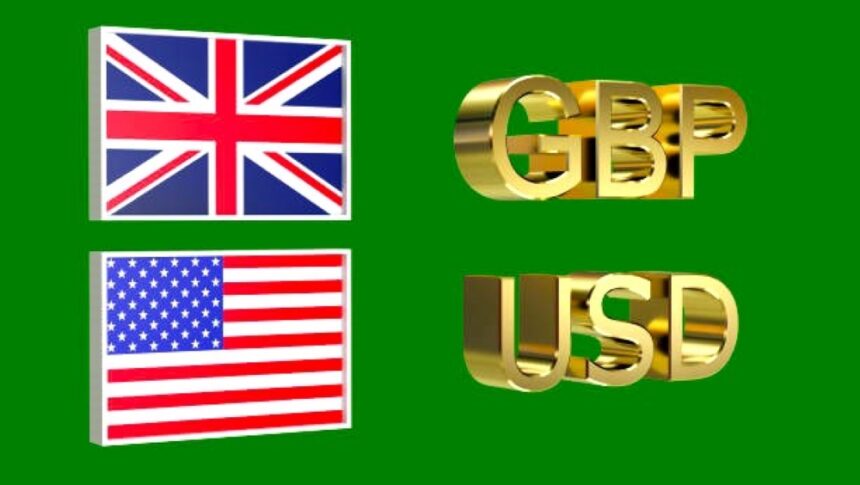UK Growth Prospects Brighten While US Dollar Retreats on Judicial Blow to Tariffs
The Pound Sterling (GBP) rallied against the US Dollar (USD) on Thursday, climbing toward 1.3500 after a US court struck down former President Donald Trump’s controversial tariff strategy. The legal decision not only challenged the legitimacy of a key pillar of Trump’s trade agenda but also introduced fresh uncertainty into US trade policy. As a result, the US Dollar shed its early session gains, boosting GBPUSD in North American trading.
Legal Shock: US Court Undermines Trump’s Tariff Legacy
In a landmark ruling, the US Court of International Trade declared that the imposition of sweeping tariffs by Donald Trump violated constitutional limits. Trump’s use of the International Emergency Economic Powers Act (IEEPA)—a law dating back to the Carter era—was deemed an overreach, particularly with regard to the so-called “Liberation Day” tariffs, which were broadly applied across multiple sectors.
The court upheld some sector-specific tariffs—such as those on metals, autos, and semiconductors—but the sweeping ones were invalidated. Businesses that had built procurement models around these levies now face new uncertainty, with the court giving a 10-day deadline to the White House for a permanent injunction on the nullified tariffs.
White House economic adviser Kevin Hassett expressed confidence that the verdict would be overturned on appeal, indicating that trade negotiations with several nations remain “ongoing,” with three near-finalized deals.
Dollar Dips as Legal Risk Clouds Trade Outlook
The US Dollar Index (DXY), which had soared above 100.50 earlier in the day, fell back to 99.70 as the ruling disrupted the market’s perception of US trade stability. The Greenback’s retreat helped fuel demand for competing currencies, particularly the Pound Sterling.
US bond yields and equities initially climbed on speculation that some sectors might benefit from a rollback of tariffs. However, broader concerns over executive overreach and legal wrangling erased much of those gains.
IMF Boosts UK Outlook: A New Tailwind for Pound
The International Monetary Fund (IMF) upgraded its 2025 UK growth forecast slightly to 1.2%, up from 1.1%, reflecting a stronger-than-expected Q1 economic performance. The Office for National Statistics (ONS) reported that the UK economy grew 0.7% in Q1, outperforming consensus estimates of 0.6% and far exceeding Q4 2024’s meager 0.1%.
This revision marks the IMF’s acknowledgment of improving domestic demand in Britain, boosted by increased consumer spending and resilient labor market conditions.
Bank of England Rate Cut Expectations Fade
Adding to Sterling’s bullish momentum, expectations that the Bank of England (BoE) will cut interest rates in June have diminished. This follows a hotter-than-expected April CPI print and robust UK Retail Sales figures.
Inflation remains sticky in Britain, with core inflation levels and services inflation suggesting that demand-driven pressures are still present. The recent data has forced traders to scale back dovish bets, pushing UK bond yields higher and supporting the GBP.
US Economic Signals: Mixed Picture Ahead of PCE Data
Investors are now focused on Friday’s release of the US Core PCE Price Index—the Federal Reserve’s preferred measure of inflation. The data is expected to show 2.5% YoY growth, a slight moderation from the previous 2.6%. While this suggests easing inflation, it’s not yet enough to shift the Fed into a rate-cutting mode.
Meanwhile, the revised Q1 GDP data from the Bureau of Economic Analysis (BEA) showed the US economy contracted only 0.2%, better than the flash estimate of -0.3%. Although still negative, the revision provided a small degree of optimism about underlying economic resilience.
Pound Technical Outlook: Bullish Rebound in Play
From a technical perspective, GBP/USD’s rebound toward 1.3500 is significant. That level had previously acted as both psychological resistance and a breakout threshold for momentum traders.
If the pair can hold above 1.3470 and build momentum, the next resistance zones lie near 1.3540 and 1.3600. Support sits near 1.3400, and a break below that could expose Sterling to a short-term pullback.
The Relative Strength Index (RSI) on the 4-hour chart is trending higher but not yet overbought, suggesting that further upside is possible in the near term.
Market Reaction Round-Up: Key Movers and Sentiment Shifts for Pound
- GBPUSD climbs to 1.3470 as Dollar softens on legal trade policy disruption.
- IMF upgrades UK GDP forecast to 1.2% for 2025, citing strong Q1 data.
- BoE rate cut bets recede after hot CPI and strong retail figures.
- US Dollar Index dips to 99.70 after peaking at 100.50 on tariff news.
- Trump’s Liberation Day tariffs nullified, sparking legal-political debate.
- US core PCE inflation (due Friday) seen at 2.5%, in focus for next Fed move.
Political Implications: Trump’s Trade Doctrine on Trial
While Donald Trump remains a frontrunner for the Republican presidential nomination, this judicial rebuke could undercut a central plank of his policy platform. His use of the IEEPA to impose broad-based tariffs without congressional oversight has drawn criticism from economists and legal scholars alike.
The court’s ruling could shape future interpretations of presidential powers on trade and emergency economics. It also raises questions about whether future presidents could freely use the same authority for sweeping economic decisions.
Global Business Response: Supply Chain Strategies in Flux
Multinational firms that had adjusted their supply chains to account for Trump-era tariffs may now have to rethink sourcing and investment plans. Many businesses had treated these duties as semi-permanent, impacting cost calculations and supplier contracts.
With legal uncertainty now clouding that assumption, companies are likely to adopt more flexible procurement models and hedge their supply-side risks more aggressively.
Outlook: Pound Poised for Further Gains if Dollar Weakness Persists
Looking ahead, if the US Dollar continues to weaken amid legal uncertainty and mixed economic signals, Pound could extend gains beyond the 1.3500 threshold. Much will depend on:
- US PCE inflation data
- BoE monetary policy tone
- Further legal updates on tariffs
- UK wage and employment data in June
With Sterling finding multiple tailwinds—from better-than-expected growth to receding BoE cut risks—the path of least resistance appears upward, provided that US macroeconomic and legal risks continue to weigh on the Dollar.
https://voiceoftraders.com/analysis/eurusd-recovers-as-us-court-blocks-tariffs
[faq-schema id=”39714″]









